DEEP TROUBLE
The alarming story southern right whale skin tells us about their changing feeding habits
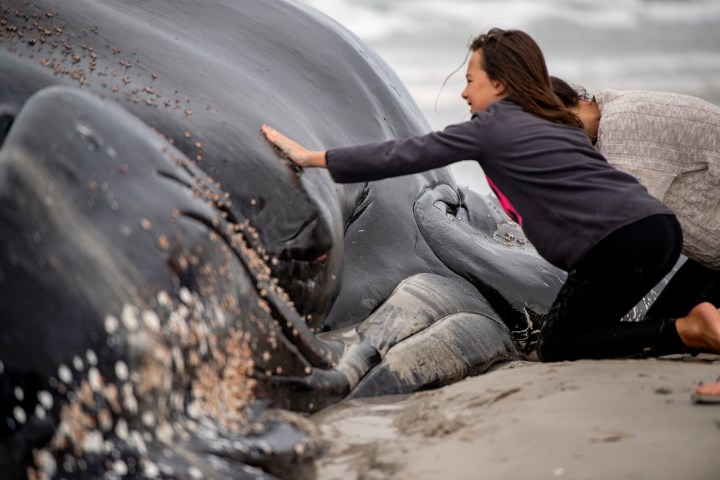
Southern right whales once teetered on extinction, now 100 years later their skin is telling scientists that they are in trouble again, with a warning for other species too.
Minute skin samples harvested from these once critically endangered animals provide a travel log revealing that they have changed feeding strategy.
These changes are believed to be a consequence of rapid climate change.
It is from these samples that scientists have been able to collect measurable amounts of carbon and nitrogen isotopes.
Since these isotopes vary from different marine locations it has allowed a peek into where these animals have been feeding.
“Despite their large size, whales can be very hard to track,” says Professor Robert Harcourt, a marine scientist at Macquarie University. “Using this technique, we have been able to piece together a map of where the southern right whales have travelled across the Southern Ocean.”
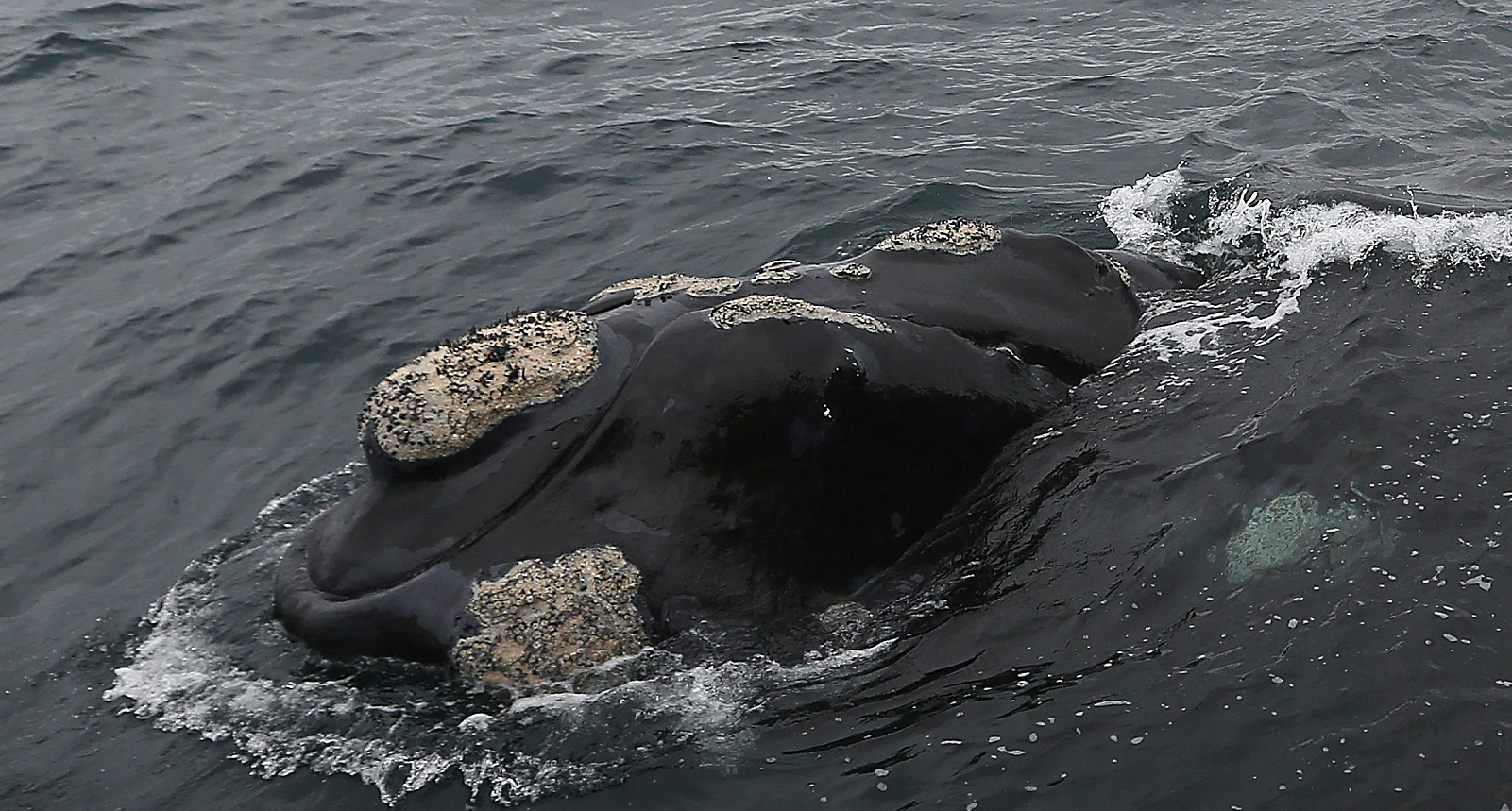
A southern right whale greets tourists at Walker Bay in Hermanus on 3 September 2014. The bay is known as one of the best whale-watching spots in the world. (Photo: Gallo Images / The Times / Esa Alexander)
It takes about three months for these isotopes to show on the skin, and the map provides a delayed picture of the whale’s journey.
Nevertheless, the data suggest that recently whales have begun foraging in different areas of the ocean and this is believed to be caused by krill, which they feed on, changing their distribution.
Getting skin samples from these 20-tonne giants means getting up close and using a bow and arrow.
“What we are seeing in South Africa is similar to what we are seeing on a global scale,” says Dr Els Vermeulen, research manager of the Mammal Research Institute Whale Unit at the University of Pretoria. “That’s why we are trying to put the pieces of the puzzle of these different breeding grounds together to see if we can find a more global picture and understanding.”
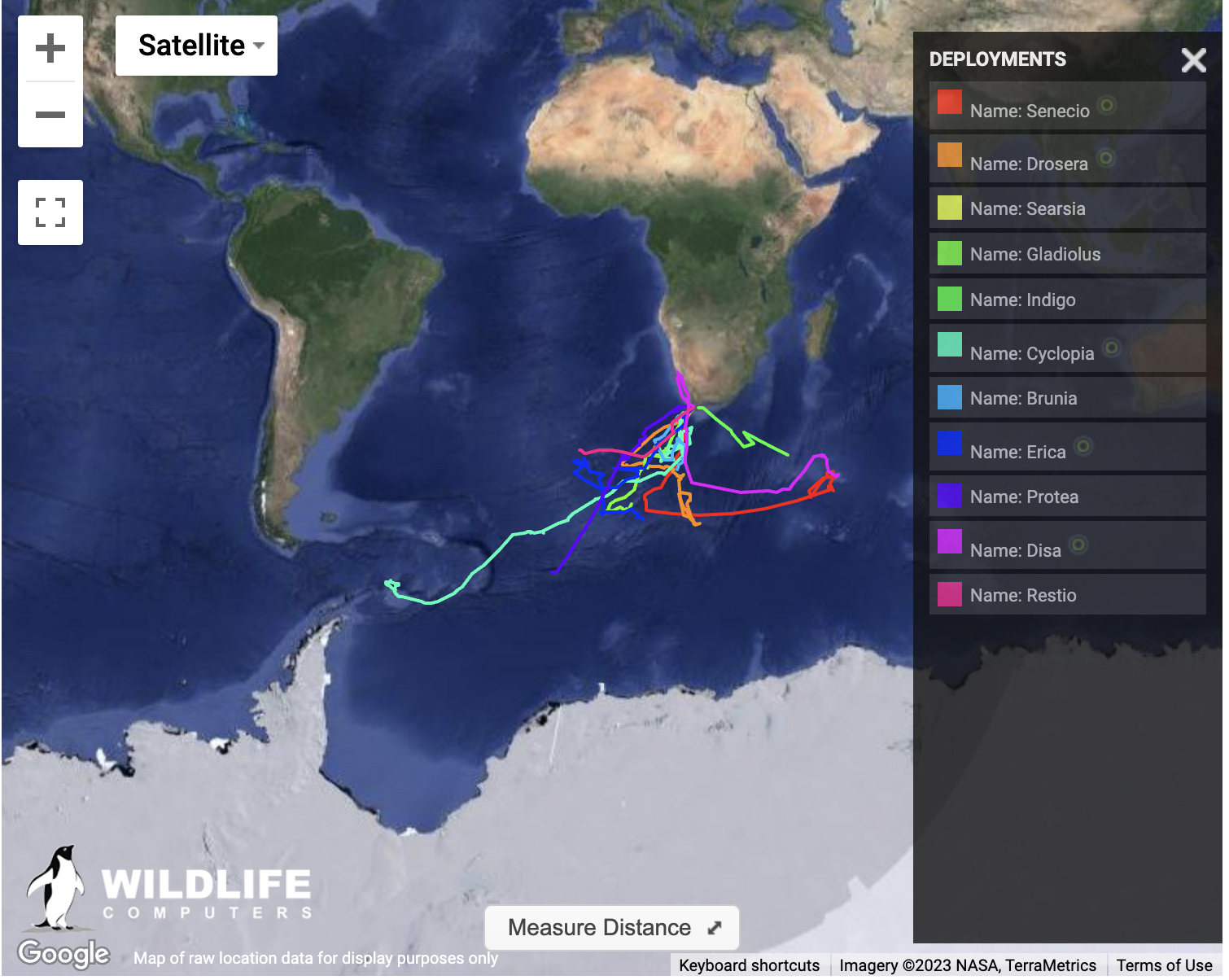
This map shows the live location of 11 adult female Southern Right whales which were tagged in Walker Bay in October 2022.
The scientists from the US, Australia, Argentina, Brazil, South Africa, Europe, the UK and New Zealand analysed 1,002 samples that were collected between 1994 and 2020. South Africa is an important sampling and monitoring point for southern right whales because they use the coastline as a nursery ground. It is here where female whales come to calve.
Getting skin samples from these 20-tonne giants means getting up close and using a bow and arrow. The 3mm sample of skin is collected when the bow is fired into the skin.
“It’s kind of probably like a bee sting to them,” says Vermeulen. “Don’t forget these whales are massive. They react a little bit and then two seconds later they are fine.”
The females were on a three-year cycle, so every three years they would have a baby, but then in the last decade we have been seeing that females are taking longer to give birth.
Recent satellite tagging is also helping build a picture of how whales are changing their migration routes. These are journeys thousands of kilometres that now go as far south as to the edge of the Antarctic ice sheet. Sometimes they travel as far as the Falkland Islands.
“From all the data, it appears that when they migrate back to the South African coast, they need a feeding stop. It is very likely they’re just spending more energy than they normally would to find food,” explains Vermeulen.
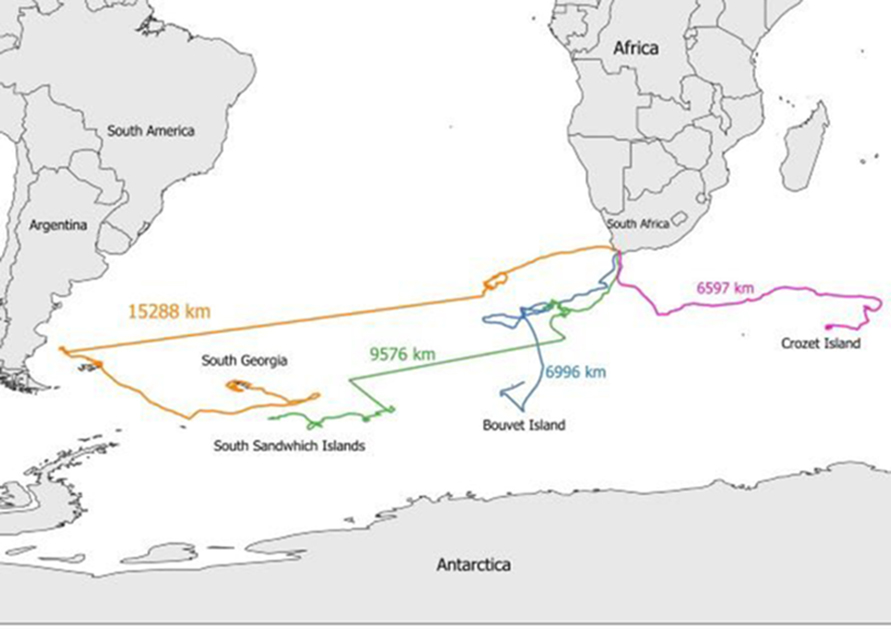
This figure shows the tracks of 4 adult female Southern Right Whales that were tagged in in October 2021 in Walker Bay.
By analysing whale-catch records from 1792 to 1968, the scientists were able to get an idea of the southern right’s historical range. This they found was largely stable in the mid-latitudes.
“These results suggest that climate change has driven recent shifts in the distribution of southern right whales,” Harcourt says.
Read more in Daily Maverick: The harpoons are gone, but whales face more complex modern threats
Just 100 years ago the southern right whale was on the path to extinction. It was the favoured species for whalers who gave it its name by referring to the docile animal as the right whale to hunt. By 1920 there were believed to be just 200 individuals left. With the banning of whaling the species has been able to make a comeback. For several decades the southern right’s birth rate has been riding at about 7%, but over the past decade it has dropped to 6.5%.
“The females were on a three-year cycle, so every three years they would have a baby, but then in the last decade we have been seeing that females are taking longer to give birth. They are giving birth every four to five years,” says Vermeulen. It has also been observed how right whales have lost body mass.
Other species in the southern Atlantic are also showing distribution changes.
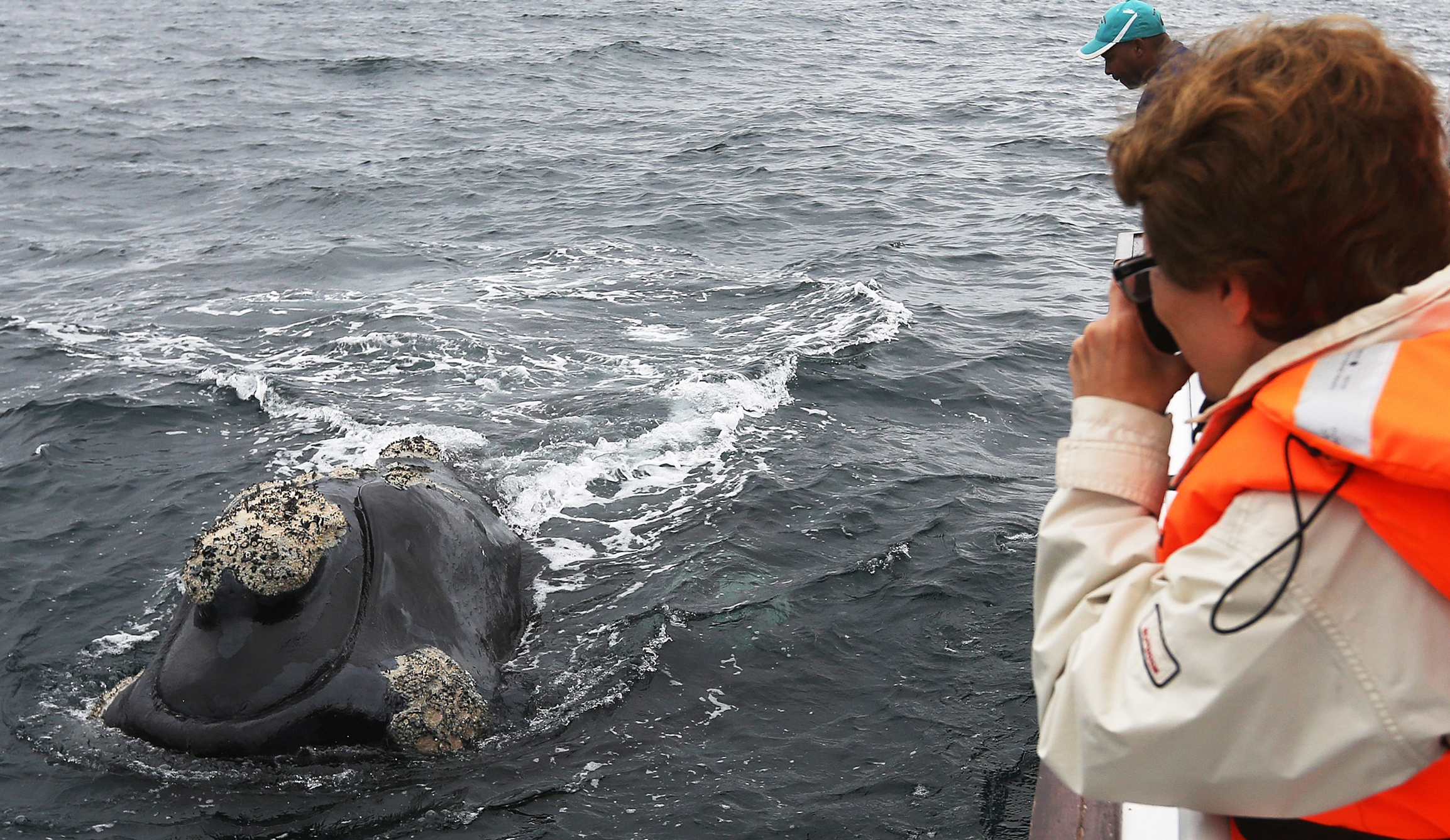
A southern right whale at Walker Bay in Hermanus on 3 September 2014. (Photo: Gallo Images / The Times / Esa Alexander)
“If you look at Southern Ocean predator literature, we are seeing the same effects on penguins, seal colonies and a southward contraction of krill,” says Vermeulen.
What the study found is that different populations of southern right whales are not acting uniformly in their search for krill.
“An important aspect of this study is that it shows that climate change doesn’t mean one thing everywhere and it is causing different effects in different parts of the ocean,” says Dr Emma Carroll, from New Zealand’s University of Auckland Waipapa Taumata Rau.
The research could help in identifying areas where conservation efforts could be focused in the future.
“Krill is at the base of the food web in the Southern Ocean, and if right whales’ body condition is decreasing this way and they are reproducing slower, it totally tells us that more species will be affected,” says Vermeulen. DM/OBP









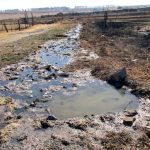











Comments - Please login in order to comment.